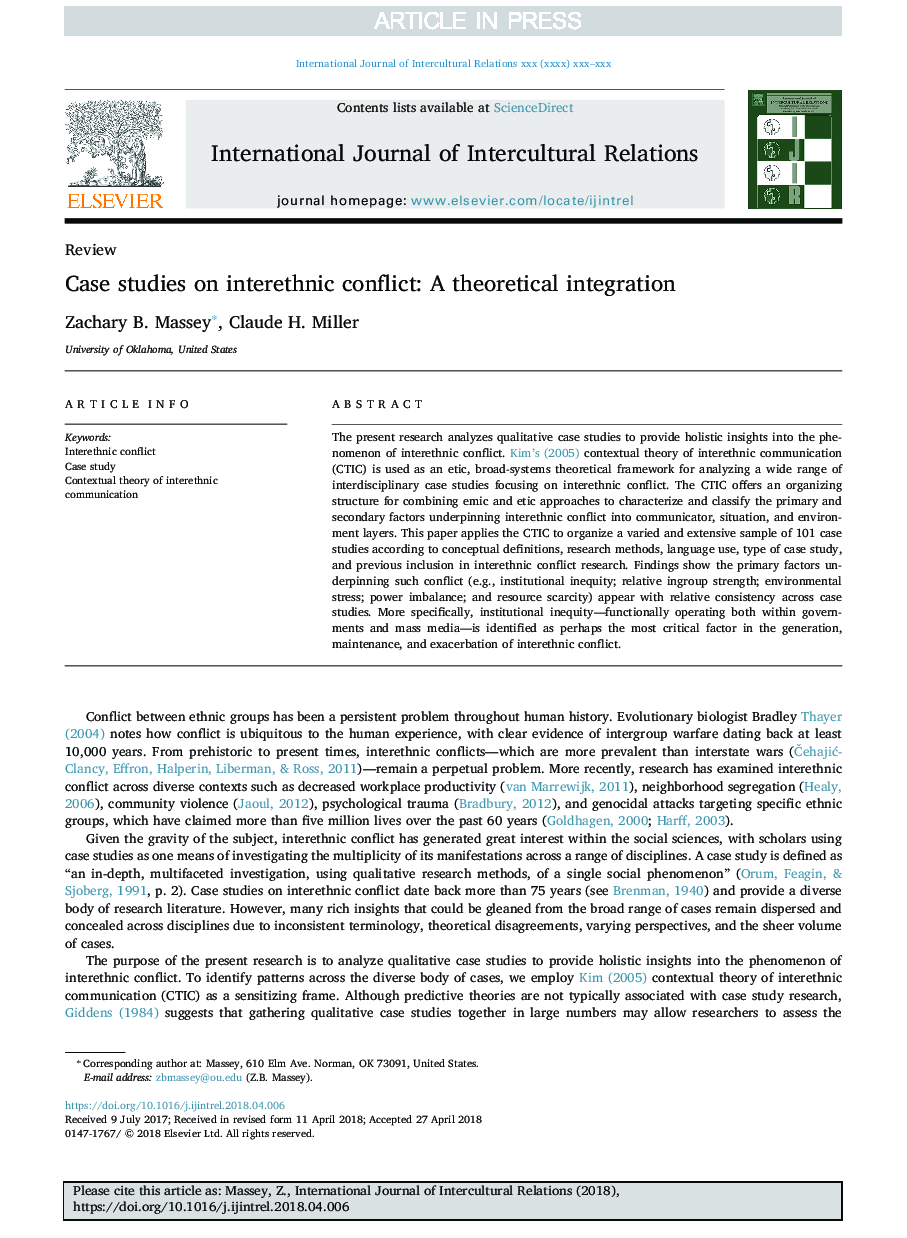| Article ID | Journal | Published Year | Pages | File Type |
|---|---|---|---|---|
| 11004706 | International Journal of Intercultural Relations | 2018 | 18 Pages |
Abstract
The present research analyzes qualitative case studies to provide holistic insights into the phenomenon of interethnic conflict. Kim's (2005) contextual theory of interethnic communication (CTIC) is used as an etic, broad-systems theoretical framework for analyzing a wide range of interdisciplinary case studies focusing on interethnic conflict. The CTIC offers an organizing structure for combining emic and etic approaches to characterize and classify the primary and secondary factors underpinning interethnic conflict into communicator, situation, and environment layers. This paper applies the CTIC to organize a varied and extensive sample of 101 case studies according to conceptual definitions, research methods, language use, type of case study, and previous inclusion in interethnic conflict research. Findings show the primary factors underpinning such conflict (e.g., institutional inequity; relative ingroup strength; environmental stress; power imbalance; and resource scarcity) appear with relative consistency across case studies. More specifically, institutional inequity-functionally operating both within governments and mass media-is identified as perhaps the most critical factor in the generation, maintenance, and exacerbation of interethnic conflict.
Keywords
Related Topics
Social Sciences and Humanities
Business, Management and Accounting
Business and International Management
Authors
Zachary B. Massey, Claude H. Miller,
